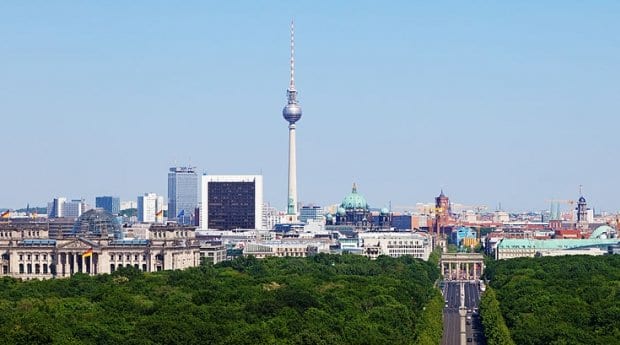Berlin is one of the most gay-friendly cities in the world. A vast and diverse set of gay scenes, thoughtful civic amenities and tourist-friendly pricing make Germany’s capital a popular destination. The city is a mecca, and not only for gay people.
Prices here are reasonable compared to other European capitals, and people from other EU countries and beyond are still flocking in, creating an ever-more-cosmopolitan ambiance. English is firmly established as the second language of most people, especially in the west, so English-only tourists will have little trouble communicating.
Gay life is easily found in the Schöneberg, Friedrichshain, Kreuzberg and Prenzlauer Berg neighbourhoods. Best known to tourists are the quiet tree-lined streets of Schöneberg, a little south of the area between Wittenbergplatz and Nollendorfplatz U-Bahn stations. It has a well-established, multifaceted gay community, and you’ll often see same-sex affection and leathermen in full regalia alongside families and kids on bikes. It is also the location of the big summer street events: the Stadtfest lesbian and gay festival and the Christopher Street Day celebrations.
Many of the gay bars, clubs and shops are located in Schöneberg. Christopher Isherwood, who wrote so evocatively of Berlin, lived in this neighbourhood (at Nollendorfstrasse 17) more than 70 years ago. As in other German cities, the straight folks blend right in. A few minutes’ walk from Nollendorfplatz station Mann-O-Meter is a queer community centre with information on gay Berlin.
The U-Bahn (U2) will take you from Schöneberg to Eberswalder Strasse and Schönhauser Allee stations, in what was once East Berlin. Around and between the two stations, the Prenzlauer Berg district is full of interesting sights. East German gay society emerged from an alternative art and political milieu, which came of age under the old regime behind the wall. The district retains, almost a generation later, a distinct appearance and atmosphere from that of the former West Berlin. There are gay sex shops, saunas, restaurants and bars here, but gay sensibilities and perspectives owe less to American and Western European models than to their own historical roots.
Kreuzberg and Friedrichshain districts also have an alternative feel and are growing in popularity with gay people looking for lower housing prices and a more multicultural mix. Some of the biggest dance clubs are located here, along with plenty of small neighbourhood party bars and men’s haunts, including the most recent sauna opening.
There are many beautiful parks scattered throughout Berlin, not least the cruisy Tiergarten, where one can enjoy the summer sunshine without a stitch on and raise nary an eyebrow — not surprising in one of the most gay-friendly cities in the world. There’s a network of public swimming pools with saunas, water cascades and wave makers. In winter they provide a warm and cozy indoor retreat. In summer, open-air pools and lakes offer relief from hot weather.
For more on gay Berlin, see our City Guide, Listings Guide, Events Guide and Activities Guide.

 Why you can trust Xtra
Why you can trust Xtra